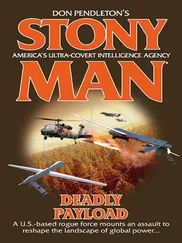The next-generation model, called SA-6, was fielded in the late 1960s. A mobile SAM on a tracked vehicle, it used a STRAIGHT FLUSH radar and each battery contained about twenty-four missiles. NATO called it a “GAINFUL,” though it was known to the Soviets as a “KUB,” meaning “cube,” as there were three missiles per launcher. It was guided by the launching radar, so the steering commands for most of the intercept came directly from the STRAIGHT FLUSH. However, during the terminal phase of flight, the missile “sees” the reflected signal from the target and provides its own steering. This is called Semi Active Radar Homing (SARH) and is much deadlier than command guidance, as the reaction times are far faster.
Soviet SA-6s were sold to Egypt, among others, and were responsible for most of the Israeli Air Force F-4 Phantom and A-4 Skyhawk losses during the 1973 Yom Kippur War. They were also used, though not very successfully, by the Syrians in the Bekaa Valley. The SA-6 brought down at least one American F-16 during the First Gulf War and another in Kosovo.
Then there is the SA-8 GECKO. Though it looks like a six-wheeled Winnebago, the system isn’t funny at all. Extremely mobile, the SA-8’s LANDROLL target-tracking radar could switch on, find you, pass the information to the missile, and shoot in a matter of seconds. It was also a short-ranged system, so there wasn’t much time to react anyway. In fact, if you got an SA-8 spike, then you reacted instantly or you wouldn’t survive to fight back.
There were others. One of the most dangerous systems was the ROLAND, which the French were good enough to sell to anybody with cash. The French have been lousy warriors since Napoleon died, but they did make good equipment. Man-portable systems, called MANPADs, were also further refined and manufactured in huge numbers. These were particularly dangerous to low-altitude fighters, because as infrared (IR) trackers, they tracked heat sources and gave no warning at all unless you happened to see them launched. If you did see one, it could usually be thrown off by a series of flares. But there were always more than one, and spotting it is next to impossible. IR SAMs are simple, cheap, and ideal for the Third World.
The American military had long been enamored with radar-guided SAMs. They were more accurate, longer-ranged, and much harder to defeat, but the problem with that was we assumed everyone else had gone high-tech as well. U.S. fighters weren’t then equipped with any kind of IR warning device. The only warning you had, if any, was when the nasty things zipped past your canopy or your engine blew up.
LEARNING THE STRENGTHS AND WEAKNESSES OF THE ENEMY and his equipment took up a great deal of a new pilot’s time. He also had to study the local flying procedures, remain instrument-qualified, and perfect his fighting skills. And there were always tests. Written exams, check-rides, spot evaluations, and formal training programs called upgrades. It was endless and all-consuming.
And I loved every minute of it.
After the initial two years required just to get into a fighter squadron, a pilot is only a wingman. In order to be listed as Mission Ready, he then goes through additional three or four months of checkout in the various missions for which his squadron is responsible. He’s still a wingman, so he always goes up with a “flight lead.”
There are “two-ship” and “four-ship” flight leads. That is, a pilot who can command the essential fighting element of two aircraft, or one who can lead two pairs. The two-ship, also called an “element,” is the basic fighting pair. These are usually combined into four-ships, six-ships, or even bigger packages, depending on the mission.
Progressing upward through the various tiers of fighter aviation is called “upgrading.” Every wingman aspires to become a flight lead, and his acceptance into that first big upgrade is strictly a matter of performance and individual ability. Lives are at stake, in the air and on the ground. Tens of millions of dollars are at risk every time a flight takes off, so this is not entered into lightly. After a year or two of being a wingman, a young pilot has his name put forward at a weekly meeting of the squadron Instructor Pilots, and his record is discussed. This includes all of his check-rides, test scores, and previous performance in his Mission Qual checkout. His attitude and, most of all, his maturity. On this note, we’re talking about professional maturity and decision-making related to flying. If we were judged by O’Club maturity, everyone would still be a wingman.
This first upgrade is important, because for the previous three to four years you’ve been following others, learning, and generally trying to stay alive. Though there’s considerable autonomy in a single-seat fighter, there’s still always a more experienced pilot nearby to plan, direct, and make most of the decisions. To lead. This mentality change is the first big step.
The actual program is straightforward. Like all upgrade and training programs, it is well organized. There is a syllabus outlining minimum requirements for every aspect of each training flight and the proficiency level needed to pass. It’s all graded.
One of the most significant hurdles for a prospective flight lead is learning the art of the briefing. Briefings are supposed to last no longer than an hour and a half. This sounds like a lot of time, but I can tell you it really isn’t. Now, except in rare cases, the pilots taking part in the mission all helped plan it the day prior. Peacetime briefing rooms are in the part of a fighter squadron called “The Vault.” This is behind a huge metal door, like a bank vault, and contains all the classified information necessary for the squadron’s various missions. No one gets in but pilots and intelligence types. The rooms are about ten by fifteen and set up to accommodate a four-ship briefing. The pilots sit around a central table and the flight lead stands up front and talks. There are white boards for drawing details and tactical scenarios. Sliding panels along the front wall contain things that are usually “standard” for most missions. Rules of engagement for employing weapons, divert field data, ground operations, etc.
The flight lead is responsible for the organization and “flow” of the brief. It starts with a time hack—a synchronization of watches. The “Overview,” which is the intended mission sequence, is discussed. This is called the “Motherhood,” and is all the non-tactical aspects of getting jets off the ground, to and from the base, and back on the ground. Types of takeoffs (afterburner or not), rejoin formations, routes, communications, and the expected return-to-base procedures are all briefed. These events vary considerably with the experience level of the pilots, training requirements, and weather. Contingency plans are a big part of each phase of a brief. How does a four-ship operate as a three-ship if a jet breaks? Who leads the flight if the flight lead doesn’t make it? Air-refueling, night procedures, and a host of other “what if”s? The permutations are endless. Emergencies are also reviewed quickly and concisely, just as they’d be dealt with at 400 knots. There’s always an EP (Emergency Procedure) of the day, where the causes, indications, and solutions are discussed.
A typical briefing will spend about twenty minutes discussing and reviewing this before getting into the point of the mission.Called the “Meat,” this occupies the remaining time. Say it’s a Wild Weasel mission to find and destroy an SA-6 battery protecting a target that is to be hit by strike aircraft. The first step of the Meat is laying out the “Big Picture.” This would include composition of the strike package, their routes into the target area, call signs, radio frequencies, and timing. The latest intelligence is also reviewed—location of the main target, locations of SAMs and Triple-A, and the expected reaction from whomever you’re trying to kill. The “Ingress” to the target area is outlined, including the type of tactical formations, reactions to enemy fighters and SAMs, and communications. A good flight lead will blend in extra information, like countermeasure usage, countertactics, or combat search-and-rescue in the event a jet goes down.
Читать дальше












